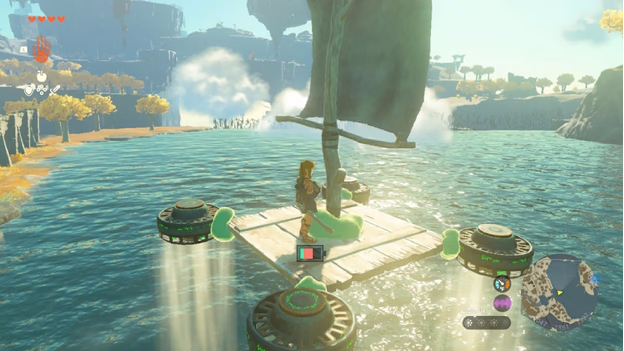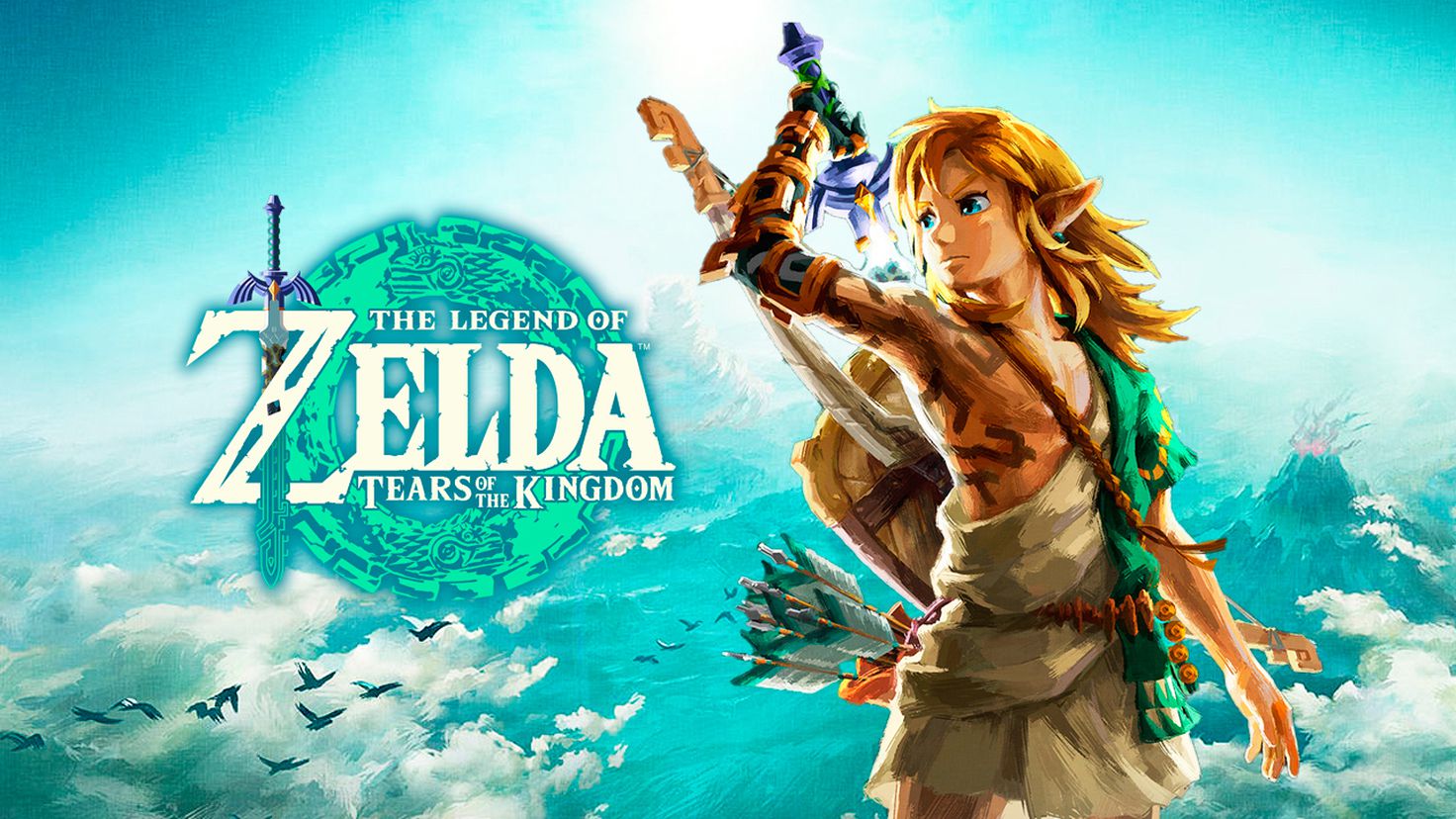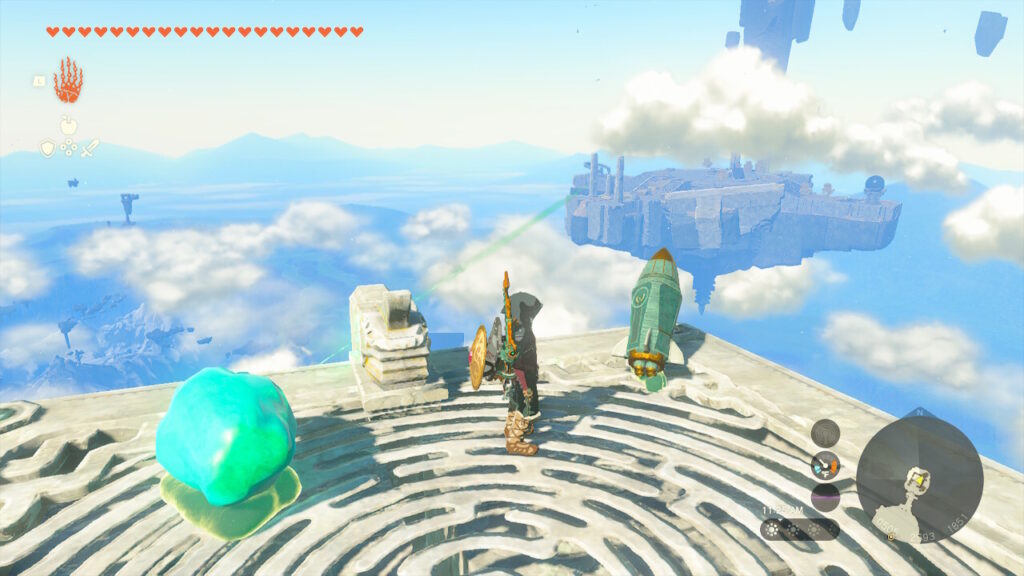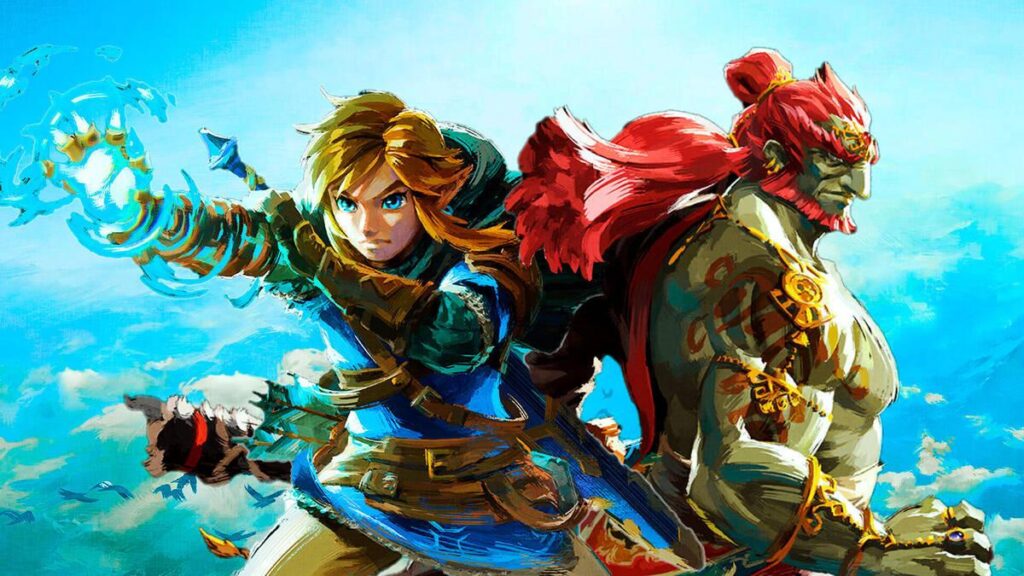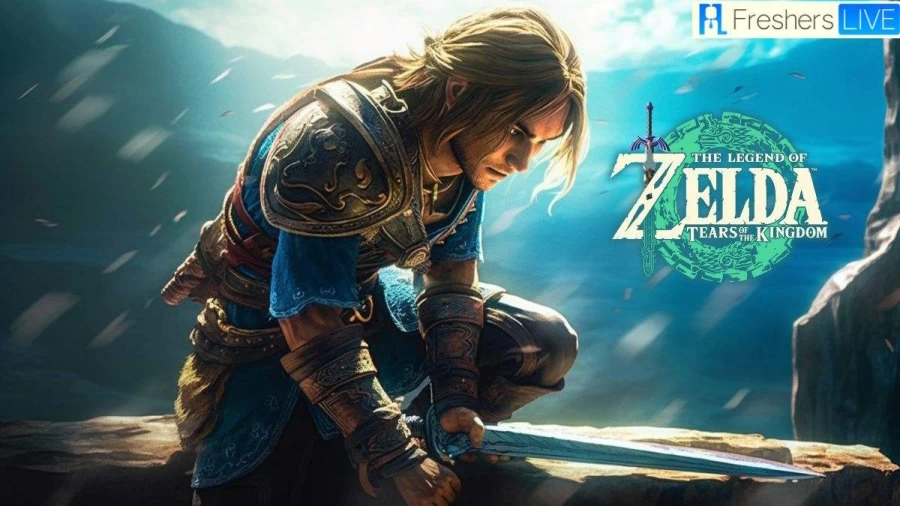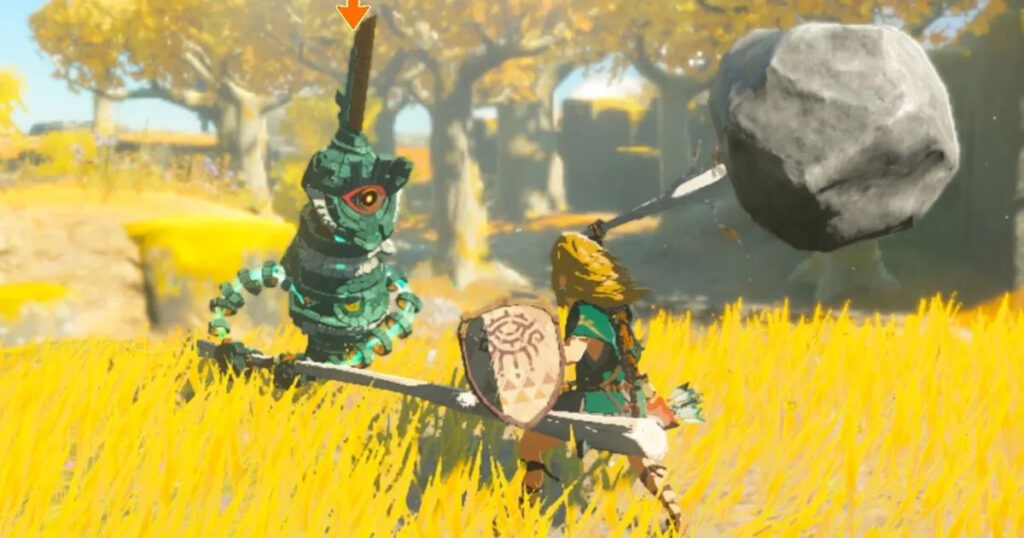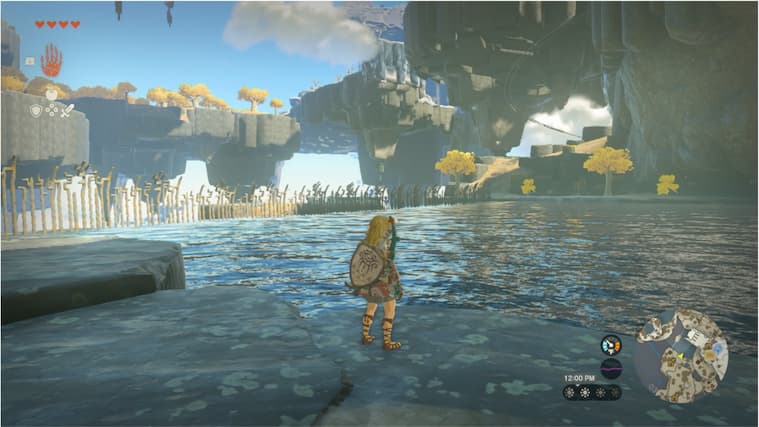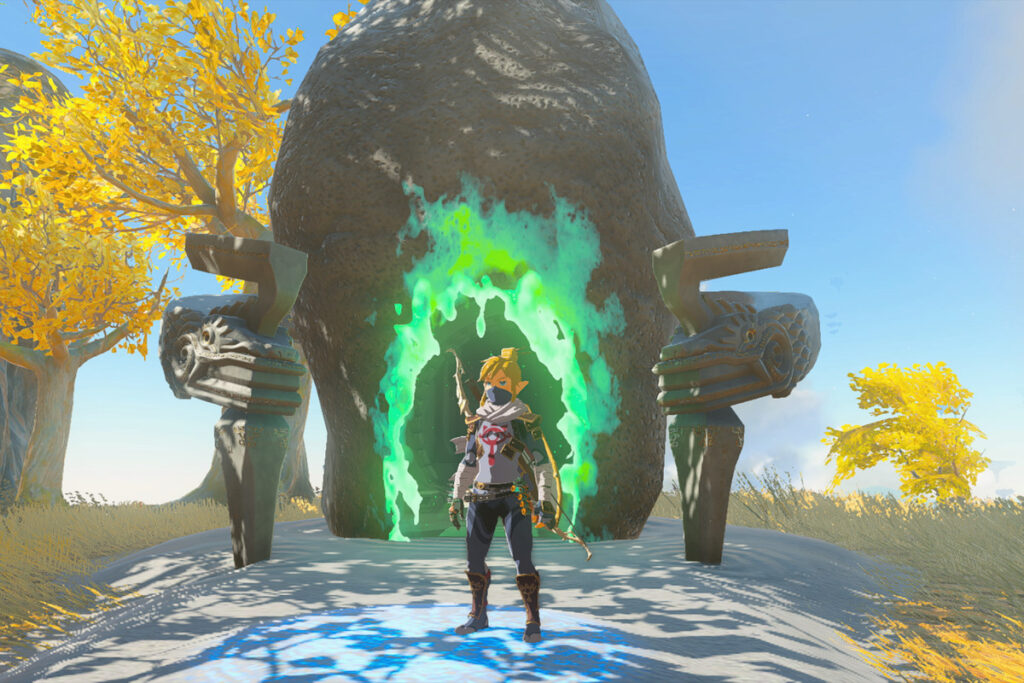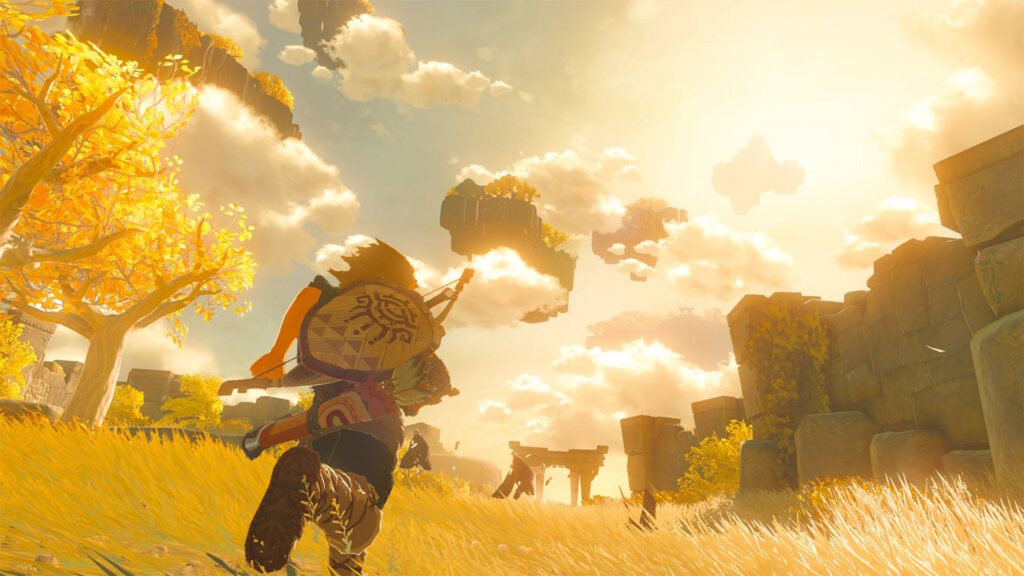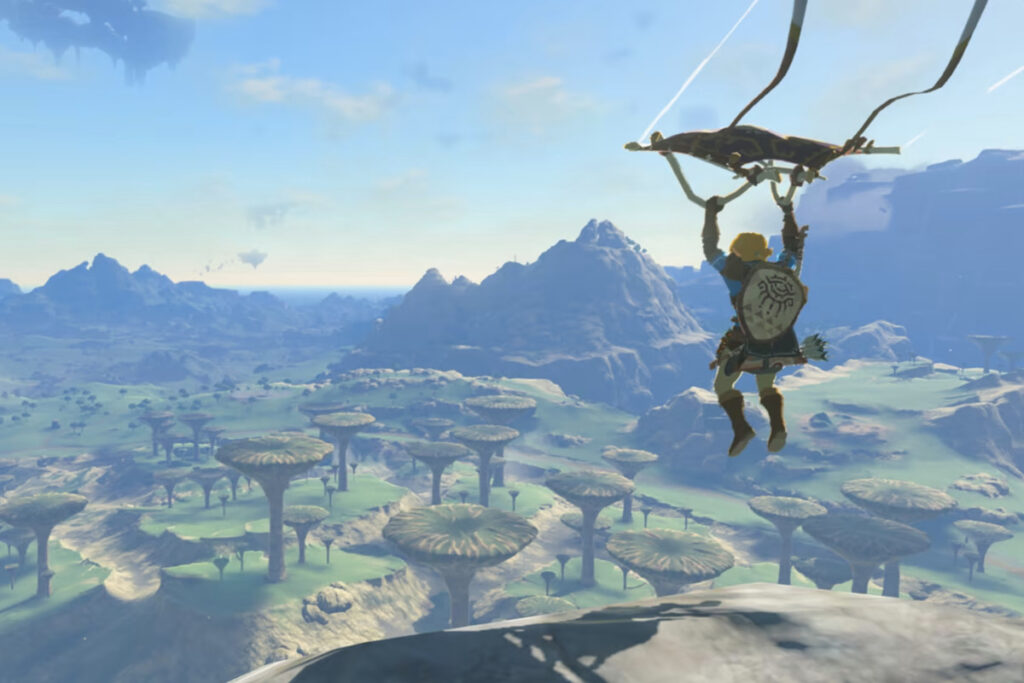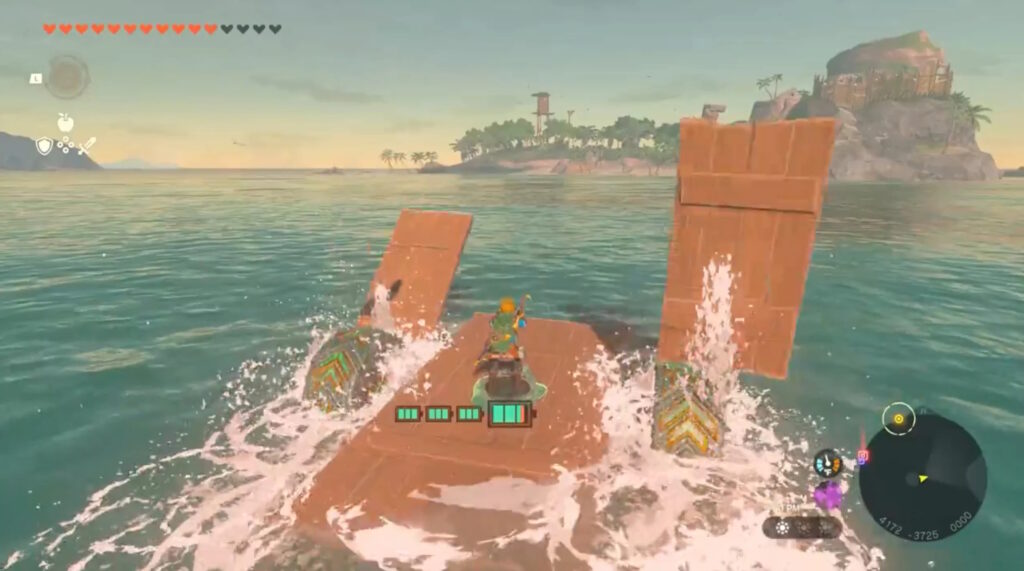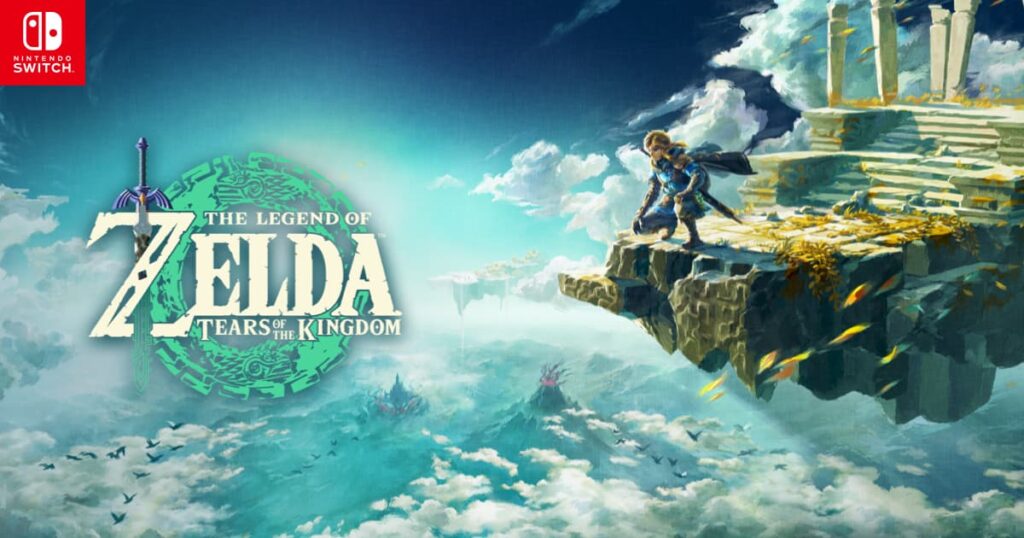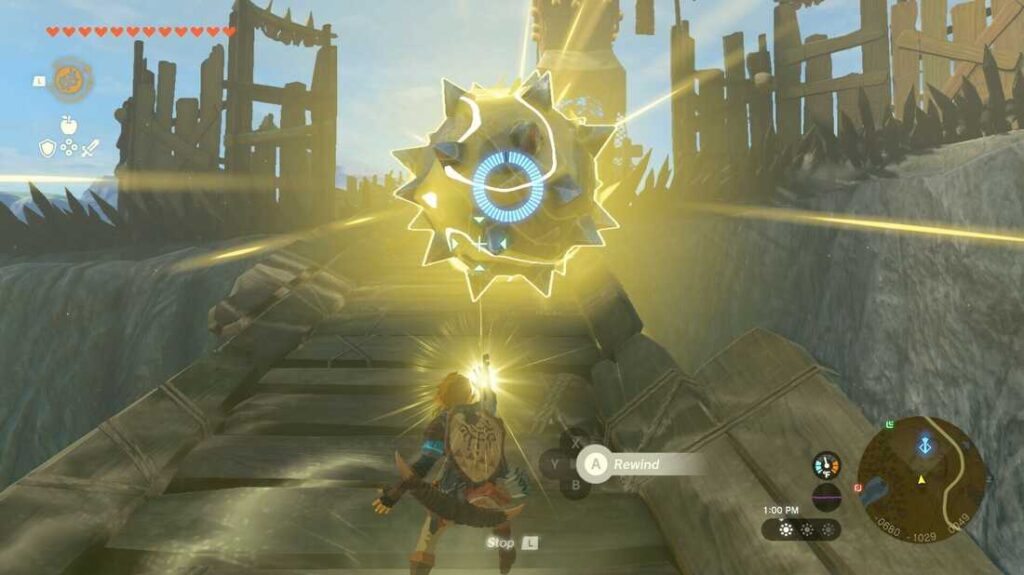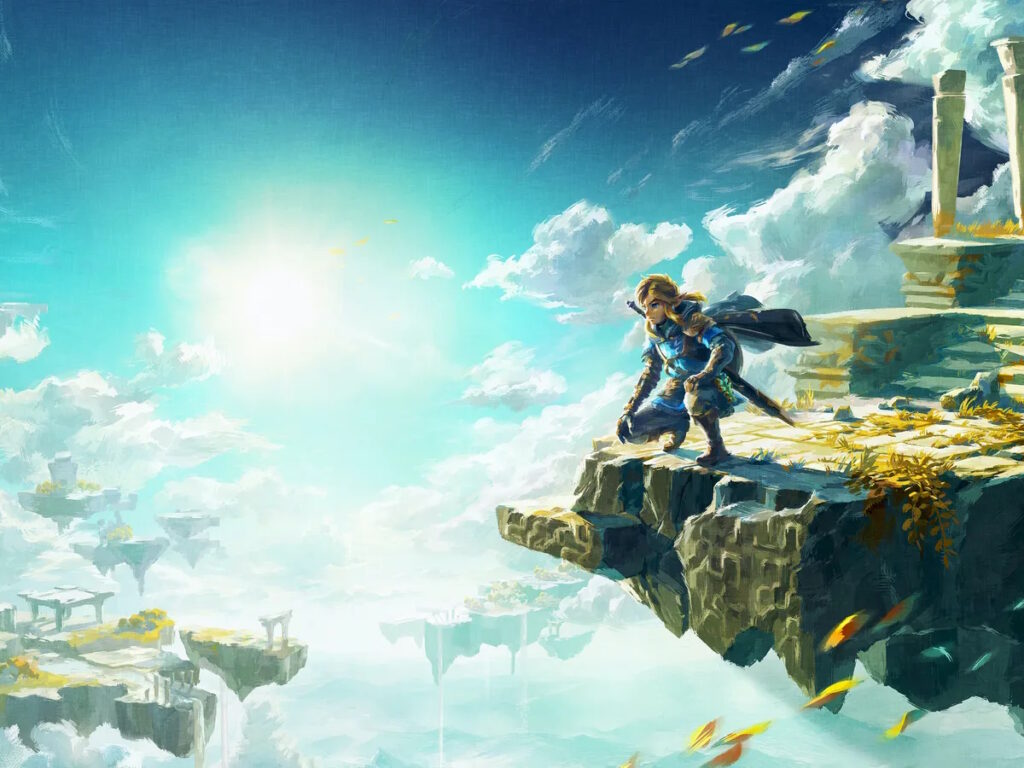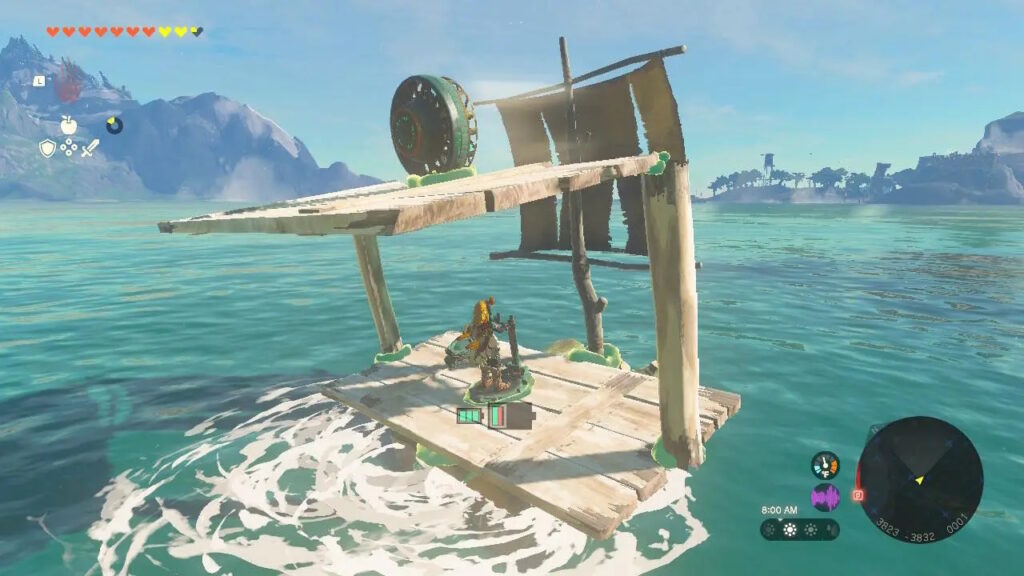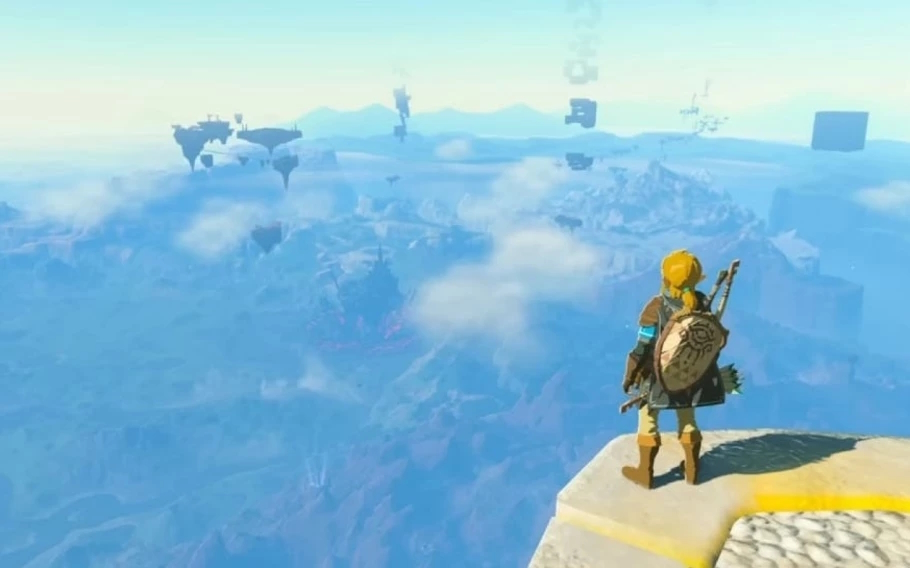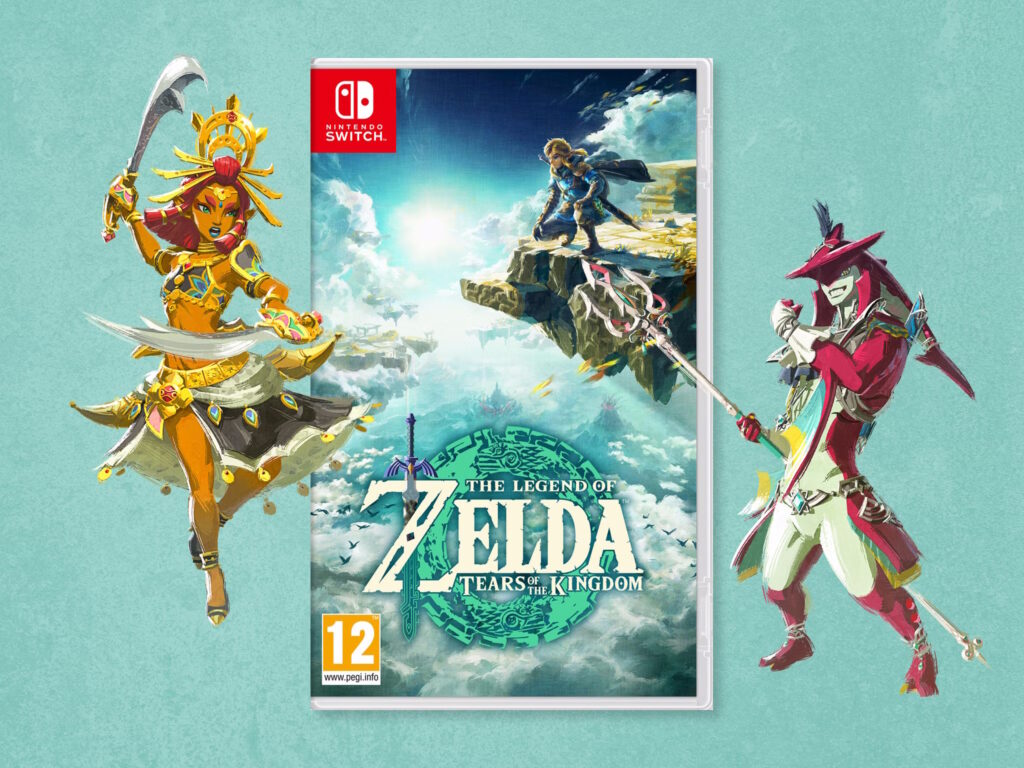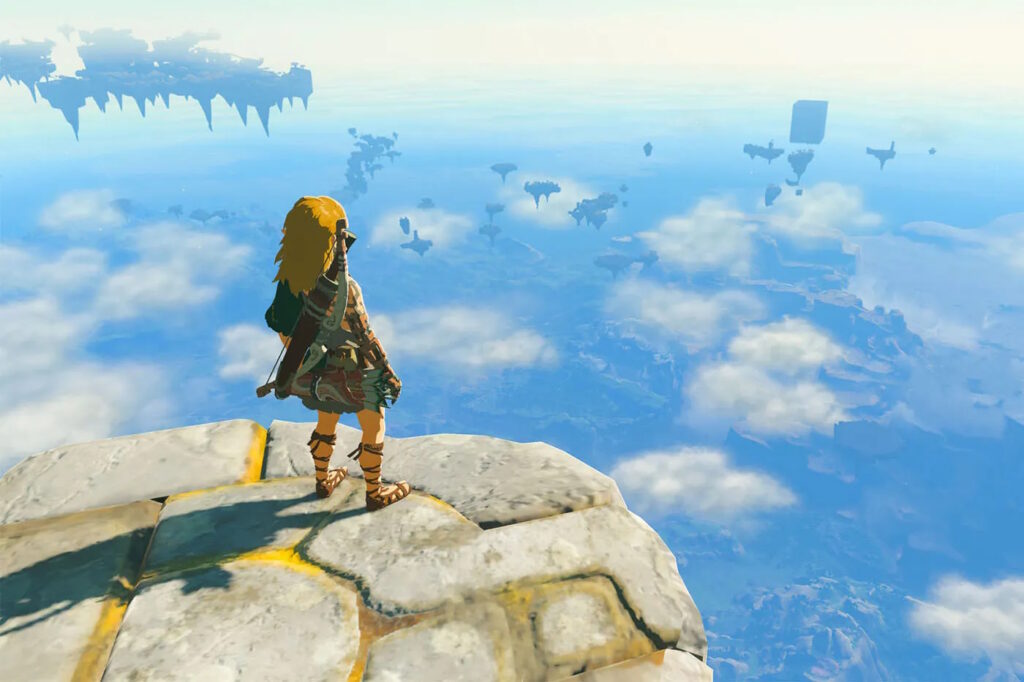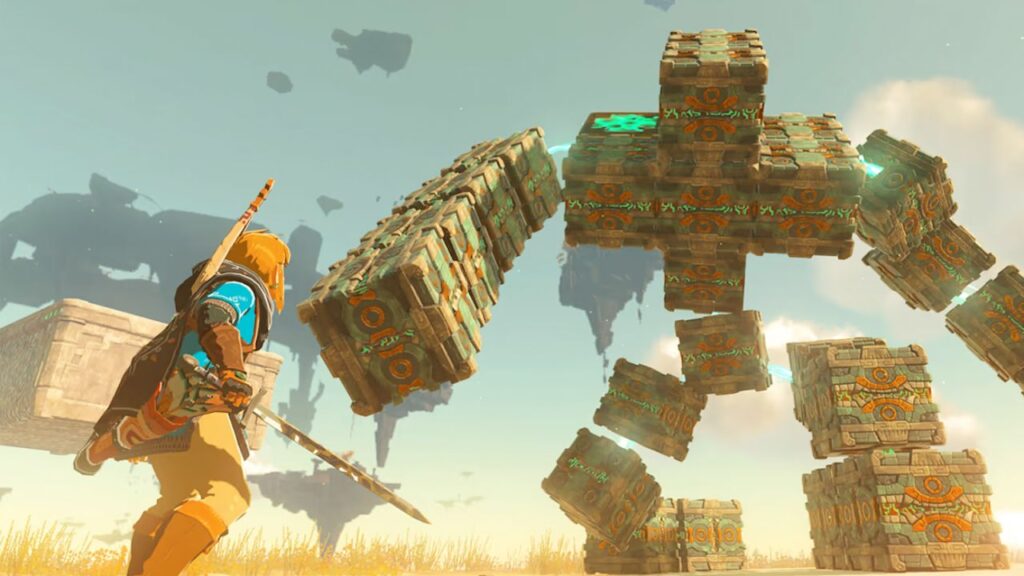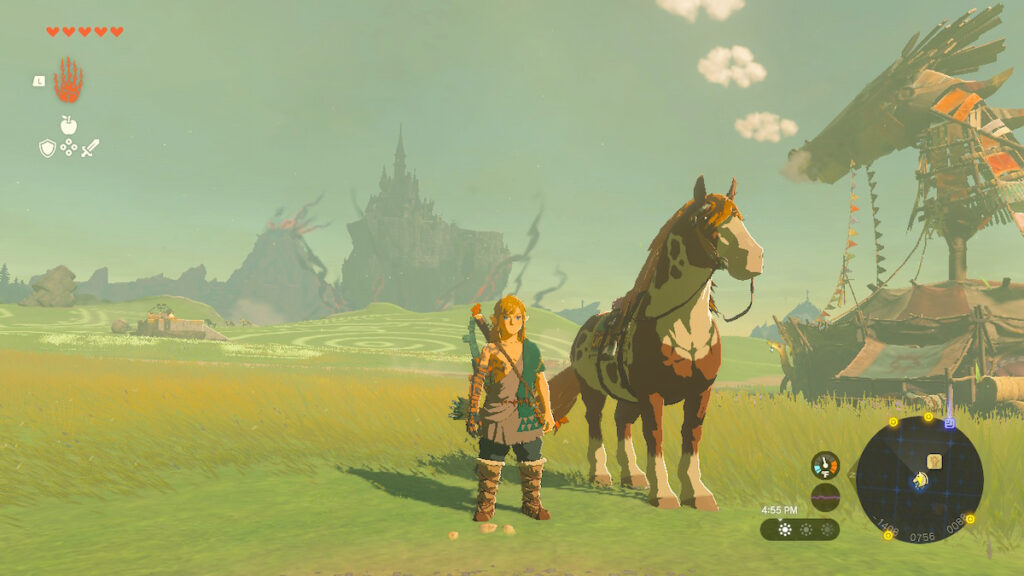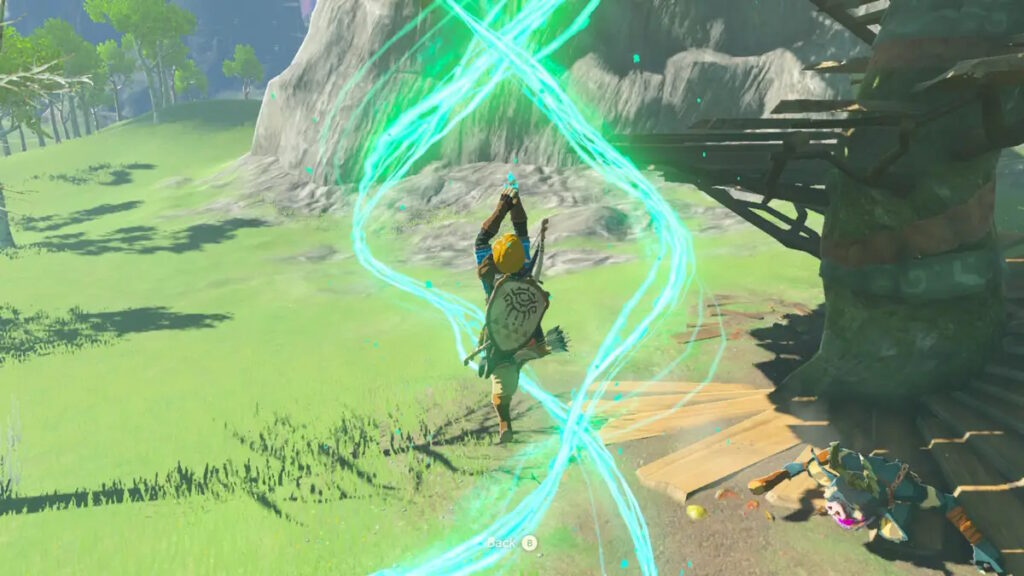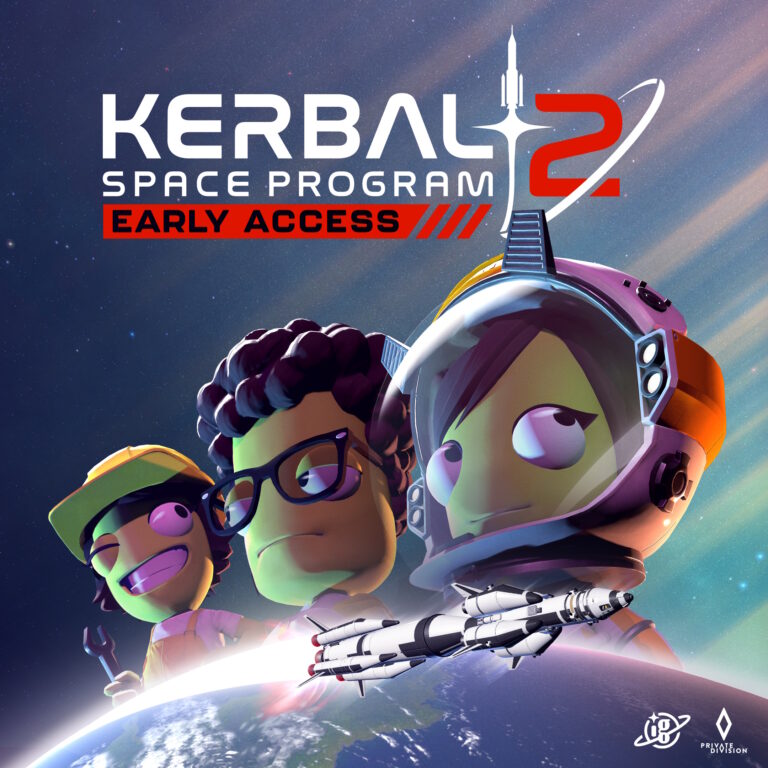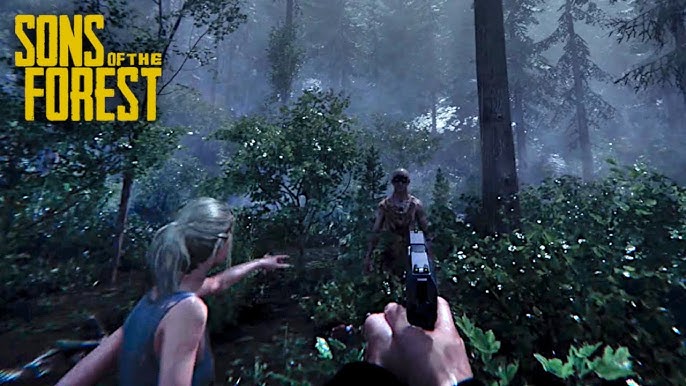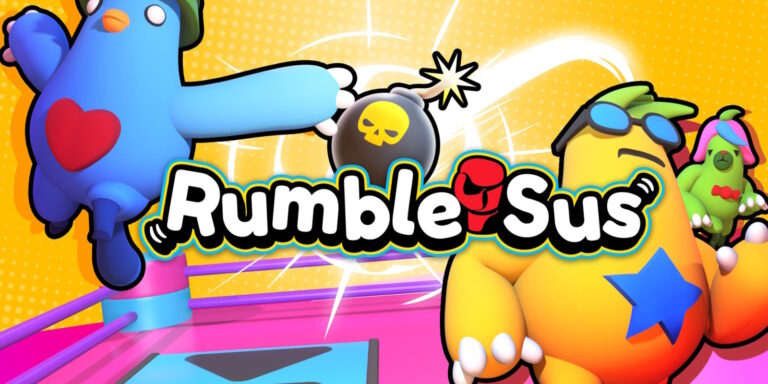Views: 3
Information
The Legend of Zelda: Tears of the Kingdom is an action-adventure game developed and published by Nintendo for the Nintendo Switch in 2023. The sequel to The Legend of Zelda: Breath of the Wild (2017), Tears of the Kingdom retains aspects from it, including the open world of Hyrule, which has been expanded to allow for more vertical exploration. The player controls Link as he searches for Princess Zelda and fights to prevent the Demon King from destroying the world.
Tears of the Kingdom was conceived after ideas for Breath of the Wild downloadable content (DLC) had exceeded its scope. Its development was led by Nintendo’s Entertainment Planning & Development (EPD) division with Breath of the Wild director Hidemaro Fujibayashi and producer Eiji Aonuma reprising their roles. A teaser was shown at E3 2019 with a full reveal at E3 2021. Tears of the Kingdom was initially planned for release in 2022, before being delayed to May 2023.
Tears of the Kingdom received critical acclaim for its open world and its focus on exploration and experimentation. It sold more than 10 million copies in its first three days of release and over 19.5 million copies by September 2023, making it one of the best-selling games on the Nintendo Switch.
Gameplay
Tears of the Kingdom retains the open-world action-adventure gameplay of Breath of the Wild (2017). As Link, players explore Hyrule and two new areas; the sky, which is littered with numerous floating islands, and the Depths, a vast underground area beneath Hyrule, to find weapons and resources and complete quests. Link can explore on foot or by climbing, riding on horseback, and using a paraglider.
New to Tears of the Kingdom are Zonai devices, which the player can use for combat, propulsion, exploration, and more. The previous game’s runes have been replaced with five new abilities: Ultrahand, Fuse, Ascend, Recall, and Autobuild. Ultrahand allows the player to pick up and move different objects and attach different objects together. This can be used with the Zonai devices to create vehicles and constructs. Fuse allows Link to combine materials, equipment, or certain objects in the world to a shield or a weapon to improve or add attributes. For example, fusing an explosive object to an arrow will cause the arrow to explode on impact. Recall can be used on an object to “rewind” its movement. Ascend allows the player to move upwards through solid surfaces. Autobuild instantly recreates a device crafted with Ultrahand, automatically using nearby devices and objects if available, or if parts are missing, creating single use replacements at the cost of zonaite, an in-game material.
Shrines and Korok seeds return from Breath of the Wild. When cleared, shrines grant players a Light of Blessing; when four are obtained, Link can use them at a Goddess Statue to either receive a Heart Container, to increase his maximum hearts by one; or a Stamina Vessel, to expand the size of his stamina wheel. Korok seeds can be traded to increase Link’s inventory capacity, allowing him to hold more melee weapons, shields, or bows. In addition to the other features in Tears of the Kingdom, a recipe system has been added into the game so players can keep track of the ingredients to certain meals or elixirs.
Gloom, a gooey red-and-black substance, can be found on Hyrule’s surface and in the Depths. When in contact with gloom, Link is slowed and his maximum hearts gradually decrease. When attacked by gloom-corrupted enemies, Link loses multiple maximum hearts at a time. This effect is reversible; it is temporary on the surface, but permanent as long as Link is in the Depths. Maximum hearts (but not health) are restored when Link returns to the surface, eats foods cooked with certain ingredients, or visits a lightroot, a large, light-emitting plant found in the Depths.
Plot
Tears of the Kingdom takes place a number of years after Breath of the Wild, at the end of the Zelda timeline in the kingdom of Hyrule. Link and Zelda set out to explore a cavern beneath Hyrule Castle, from which gloom, a poisonous substance, has been seeping out and causing people to fall ill. There, they find a mural depicting the founding of Hyrule and a subsequent conflict known as the Imprisoning War—an ancient battle against a being only referred to as the “Demon King”—and decide to venture deeper, triggering the awakening of a mummy who attacks the two with gloom. Link’s right arm is badly damaged, the Master Sword is shattered, and Hyrule Castle is raised upwards by the mummy. Zelda falls below, and as Link tries to catch her, she vanishes with a mysterious artifact. Link is rescued by a disembodied arm, which had been restraining the mummy, and on the Great Sky Island, he awakens to find that it has replaced his damaged arm. He meets the spirit of Rauru, a Zonai, and the source of Link’s new arm. Rauru assists Link as he traverses the Great Sky Island, and when the latter reaches his destination, the shattered Master Sword vanishes, and Link dives to the surface below.
There, he learns that the event in the cavern, known as the Upheaval, has wrought chaos upon Hyrule, and sets out to investigate reports of strange phenomena throughout the kingdom. In the process, he reunites with Sidon, the prince—later, king—of the Zora; Tulin, a young Rito archer and the son of Teba, a past ally of Link’s; Yunobo, a Goron and the president of YunoboCo, a mining company; and Riju, the chief of the Gerudo, and alongside them, Link ventures into ancient Zonai temples. With the defeat of the monsters occupying the temples, Link finds strange artifacts. The spirits of sages from ancient times appear to Link and his allies, appointing the latter as sages and passing down the artifacts, secret stones, which they once wielded. Afterwards, after reports of Zelda’s appearance across Hyrule, Link tracks her down to Hyrule Castle, where she reveals herself to be an impostor serving the Demon King, Ganondorf, who was the mummy beneath Hyrule Castle. The impostor, Phantom Ganon, is defeated by Link and his allies, and the former later encounters Mineru, another ancient sage, who remains in the physical world via spiritual projection. He helps create a mechanical body for her spirit to inhabit.
Through Mineru, the other ancient sages, and Dragon’s Tears scattered throughout the land, Link learns of Zelda’s fate. The artifact that vanished with Zelda was a secret stone, and with it, she was transported through time to the distant past. There, she meets Rauru, revealed to be Hyrule’s first king, and Sonia, Hyrule’s first queen. In the past, Ganondorf kills Sonia, stealing her secret stone and becoming the Demon King. Rauru appoints Mineru, Zelda, and the leaders of the Zora, Rito, Gorons, and Gerudo as sages, and, with the sages’ aid, sacrifices himself to seal Ganondorf. Later, Zelda receives the Master Sword and tasks the sages to aid Link in the future. In order to restore the Master Sword and bring it to Link, she swallows her secret stone and undergoes a process known as draconification, becoming the Light Dragon.
In the present, after ridding the Great Deku Tree from gloom in Korok Forest, Link retrieves the Master Sword from the Light Dragon and goes to confront Ganondorf below Hyrule Castle. With the aid of Sidon, Tulin, Yunobo, Riju, and Mineru, Link battles an army of monsters before engaging in combat with Ganondorf himself. Nearing defeat, Ganondorf swallows his secret stone and becomes the Demon Dragon, taking Link into the skies above Hyrule. With the assistance of the Light Dragon, Link uses the Master Sword to shatter the Demon Dragon’s secret stone, killing it. Aided by the spirits of Rauru and Sonia, Link turns the Light Dragon back into Zelda and regains his original right arm. Rauru and Sonia fade away, and Link and Zelda fall to the surface below, where they reunite.
Some time later, on the Great Sky Island, Mineru bids goodbye to Zelda and Link before fading away, while the sages vow to protect Hyrule.
Development
Development of Tears of the Kingdom started in 2017 after Breath of the Wild was completed. Initially, new ideas were thought of for DLC but eventually it evolved into a new game when too many were gathered. It was announced at E3 2019 as a sequel to Breath of the Wild. At E3 2021, Nintendo debuted a trailer revealing gameplay, story elements and a 2022 release window, but Nintendo later changed the release window to Q2 2023. More information was revealed in the Nintendo Direct presentation held in September 2022, including the title Tears of the Kingdom and a release date of May 12, 2023. Another Nintendo Direct in February 2023 teased more gameplay elements. A playable version of the game leaked online as a disk image two weeks before release.
As with Breath of the Wild, Tears of the Kingdom was developed by Nintendo’s Entertainment Planning & Development (EPD) division, Production Group Number 3, and was directed by Hidemaro Fujibayashi and produced by Eiji Aonuma. It was conceived after the team was unable to use every idea planned for Breath of the Wild’s downloadable content. New elements include floating islands above Hyrule, with players able to soar between them in a style similar to The Legend of Zelda: Skyward Sword (2011). While he was shown early demos, the involvement of the Zelda creator, Shigeru Miyamoto, was reduced due to scheduling conflicts with his role as a producer on The Super Mario Bros. Movie (2023). He was credited as “general producer”, the same position he had in the series since the end of the 2000s.
The development team created ideas during the development of Breath of the Wild. Aonuma said that the team agreed that the sequel would return to the same version of Hyrule. The technical director, Takuhiro Dohta, said that he was inspired by Wii Sports Resort (2009) to use the same world but add new mechanics: “The idea of having new discoveries in the same setting was striking to me.” He also noted that using familiar locations is useful for players when diving from the sky. The team extended the exploration areas into the sky and underground. Aonuma referred to Skyward Sword, commenting that due to the limitations of the hardware, the developers were not able to achieve a seamless descent from the sky to the surface. In that game, Link was limited to diving only from specific points. With the capabilities of the Switch, Tears of the Kingdom could now provide the freedom of traversing a game world that is connected both horizontally and vertically.
Due to its similarity to Breath of the Wild, the developers experienced “strong déjà vu”. Aonuma said that the development team was trying to create something new but also something similar to the previous game and realised that some aspects “were already as they should be”. Fujibayashi also said that there were occasions where they struggled to differentiate between the two games. The developers approached Tears of the Kingdom with a list of ideas that they had wanted to include in Breath of the Wild. Aonuma wanted the player to go underground in Breath of the Wild but was restricted by the technical limitations of the Wii U.
Tears of the Kingdom reintroduced large dungeons into the series, which are connected to Hyrule’s surface and can be tackled in any order the player chooses. Technical director Takuhiro Dohta said that the dungeons were designed with regional characteristics to make them unique to their respective environments “just like traditional The Legend of Zelda games”. The dungeons were primarily created to showcase the range of Link’s powers and gadgets as a way to maximize the gameplay. Additionally, they were designed to be accessed seamlessly rather than being closed off, allowing the player to dive from the sky straight down into the dungeon and step out again at any point.
One of the core concepts is the ability to build new items. Fujibayashi said that immediately after the release of Breath of the Wild, players began experimenting and posted videos of their accomplishments on social media. This gave the development team the confidence to create more tools in Tears of the Kingdom that players could use to create their own unique gameplay experience. Zonai devices were introduced to encourage greater experimentation, but this also required a balance to be set between allowing the player to be creative and maintaining limitations to ensure players were not able to break gameplay with infinitely powered devices.
The theme of “hands” was used as an overarching element as a way to express the concept of connecting. It is present in the mechanics, story, visuals and sound. Dohta explained that “joining hands” and cooperating with other characters is a major aspect, along with Link’s ability to use his hands to create items. Link’s right arm was created as a way to distinguish him from previous iterations of the character, but is also used symbolically to solve puzzles and open doors. Aonuma said the theme is also present within the story, which involves connecting to Hyrule’s history.
The Ascend ability was developed from a debug feature that Aonuma and Fujibayashi used to exit the caves. They agreed that it was tiresome to navigate all the way through the caves and wanted a cheat to get to the surface. Its implementation posed other challenges, such as ensuring that the player would not ascend into an empty space due to data loading problems. Aonuma cited inspiration from the open-world games Red Dead Redemption 2 and The Elder Scrolls V: Skyrim. By March 2022, Tears of the Kingdom was essentially complete, but Nintendo delayed it for a year to refine it.
Reception
According to the review aggregator Metacritic, Tears of the Kingdom received “universal acclaim”.
Several critics praised the expansion of the open world introduced in Breath of the Wild. Tom Marks of IGN praised the addition of the sky islands and caves as “massive” and “brilliant complements to the more traditional surface activities”. He also complimented the story as distinguishing itself from typical plots of Zelda games. Edwin Evans-Thirwell of Eurogamer praised the seamlessness of the “loop between underworld and sky”, writing that while the “caverns aren’t always worth the toil of discovery, none of the sky islands feel dispensable”, praising the “irresistible, toylike specificity” of their design. On the differences from Breath of the Wild, Steve Watts of GameSpot praised the “subtle ways” the world had changed, saying that “not everything is exactly the same or where you’d expect it to be, and the map is marked with myriad opportunities for exploration and curiosity”. Game Informer’s Kyle Hilliard “didn’t get the same goosebumps exploring Hyrule” as he did from Breath of the Wild, but nevertheless “adored returning to Hyrule with all new tools.”
Critics praised the addition of powers and building features to traverse and interact with the environment. Tom Marks of IGN wrote that “the sandbox is bigger, richer, and somehow even more ambitious”, praising the building system as “walking the line of powerful but approachable extremely well”, “tons of fun”, and “woven into every part”. Steve Watts of GameSpot described the powers as “much more flexible” than its predecessor and a “beautifully implemented evolution of what made Breath of the Wild so special”, stating “these tools give Tears of the Kingdom a particular flow that feels unique to the Zelda franchise.”Mike Mahardy of Polygon praised the emphasis on “self-driven experimentation” as “paramount in traversal, combat, and discovery … Experimenting with each of powers and discovering how they interact is the game.”
Several critics were mixed on the impact of performance problems. Alana Hagues of Nintendo Life wrote: “It’s evident that Tears of the Kingdom is pushing the system to its limits”, citing frame rate drops to the “low 20s” during “busy fights and locations”, although stating “it’s not hugely disruptive, and it didn’t feel any worse than Breath of the Wild … but it serves as a staunch reminder of the now-six-year-old console’s limitations.”Writing that “the Switch continues to show its age”, Mike Mahardy of Polygon noted “the frame rate can still be abysmal, especially in dense forests or areas with busy water effects. Loading times are unpredictable, ranging from two seconds to 10.”Steve Watts of GameSpot noted concerns about the aging Switch hardware, saying he “barely ever saw a hitch while playing mostly in handheld mode … even then, the performance dips were minor and temporary.”
Sales
Tears of the Kingdom was the first Nintendo-developed game to be priced at US$70. More than 10 million copies of Tears of the Kingdom were sold in its first three days of release, making it the fastest-selling game in The Legend of Zelda franchise, as well as the fastest selling Nintendo game in the Americas with over four million copies sold in the US alone. Tears of the Kingdom sold over 2.24 million copies within its first three days of release in Japan, 1.1 million being physical copies. By September 2023, the game had sold 19.5 million copies worldwide, with 3.26 million in Japan. In August 2023, it was reported that the sales of Tears of the Kingdom may have boosted the gross domestic product of Japan, with a 2.8% increase in consumer spending in the semi-durable goods sector during April to August 2023, which included video games.
Reference
https://en.wikipedia.org/wiki/The_Legend_of_Zelda:_Tears_of_the_Kingdom
Pictures
